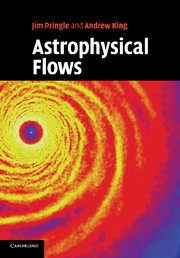Book contents
- Frontmatter
- Contents
- Preface
- 1 The basic fluid equations
- 2 Compressible media
- 3 Spherically symmetric flows
- 4 Stellar models and stellar oscillations
- 5 Stellar oscillations – waves in stratified media
- 6 Damping and excitation of stellar oscillations
- 7 Magnetic instability in a static atmosphere
- 8 Thermal instabilities
- 9 Gravitational instability
- 10 Linear shear flows
- 11 Rotating flows
- 12 Circular shear flow
- 13 Modes in rotating stars
- 14 Cylindrical shear flow-non-axisymmetric instability
- References
- Index
6 - Damping and excitation of stellar oscillations
Published online by Cambridge University Press: 05 June 2012
- Frontmatter
- Contents
- Preface
- 1 The basic fluid equations
- 2 Compressible media
- 3 Spherically symmetric flows
- 4 Stellar models and stellar oscillations
- 5 Stellar oscillations – waves in stratified media
- 6 Damping and excitation of stellar oscillations
- 7 Magnetic instability in a static atmosphere
- 8 Thermal instabilities
- 9 Gravitational instability
- 10 Linear shear flows
- 11 Rotating flows
- 12 Circular shear flow
- 13 Modes in rotating stars
- 14 Cylindrical shear flow-non-axisymmetric instability
- References
- Index
Summary
In Chapter 5 we considered the various oscillation modes that a star can show when perturbed in some way. Many types of star are observed to pulsate. Perhaps the best known are the class known as Cepheids (after the prototype star δ Cephei). These pulsate primarily in a radial mode, so that we observe the full amplitude of their oscillations. The period of these oscillations is directly related to the stellar radius, just as the pitch of an organ note is related to the length of the pipe producing it, the lowest notes coming from the longest pipes. Finding the star's radius in this way gives a measure of its brightness, so that simply by comparing the periods of two Cepheids we know their relative brightnesses. Thus, with careful calibration, measuring the period and the apparent brightness of a Cepheid gives its distance. As Cepheids are bright stars they can be seen in very distant galaxies and therefore can be used to produce a distance scale of great importance in astronomy.
However, most stars do not show pulsations of readily observable amplitude. This must mean that for most stars any oscillations set in motion by perturbations received during their lives, or in the process of formation, have long since been damped out in some way. The existence of these damping processes in turn implies that if a star does pulsate, an excitation mechanism for these pulsations must be operating.
- Type
- Chapter
- Information
- Astrophysical Flows , pp. 90 - 101Publisher: Cambridge University PressPrint publication year: 2007



